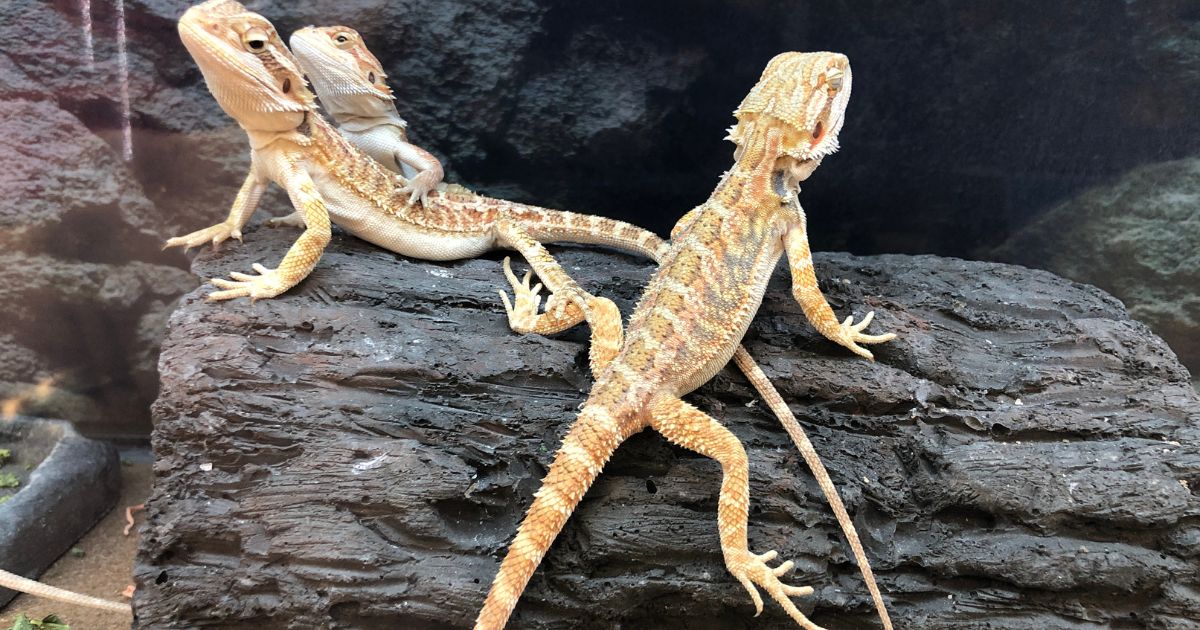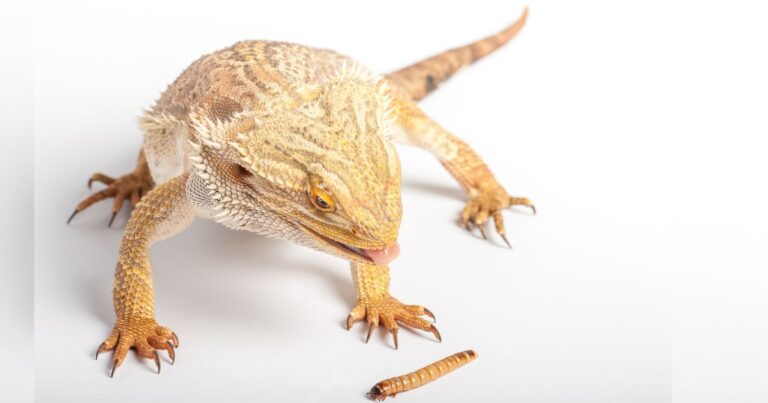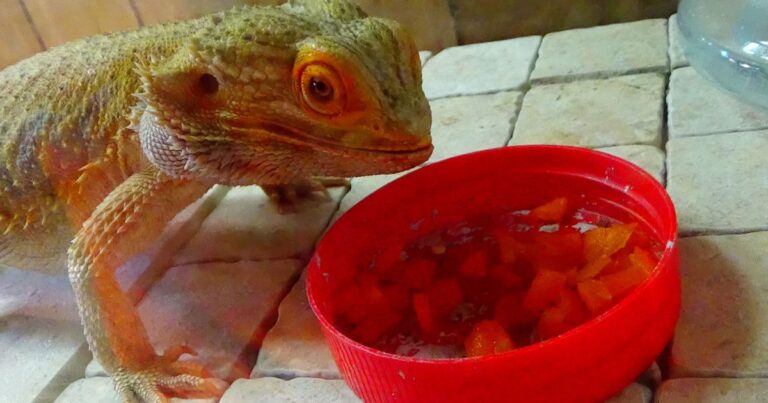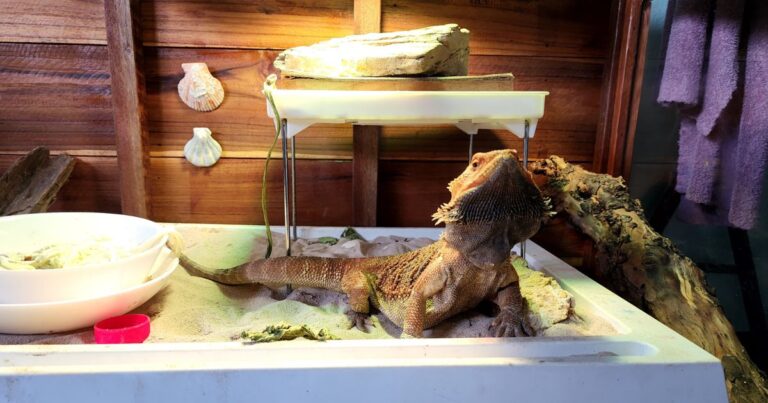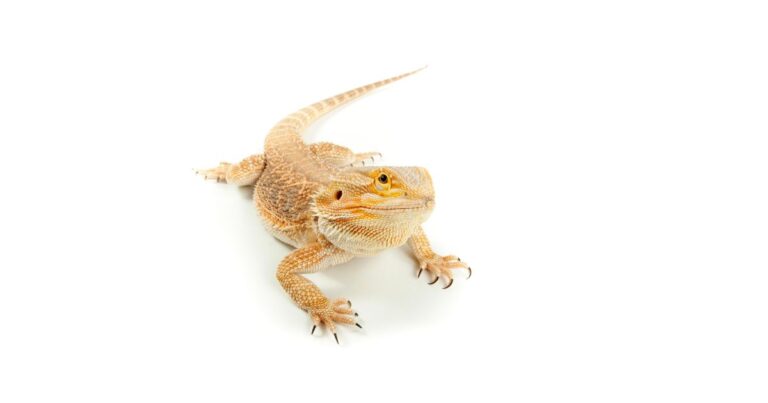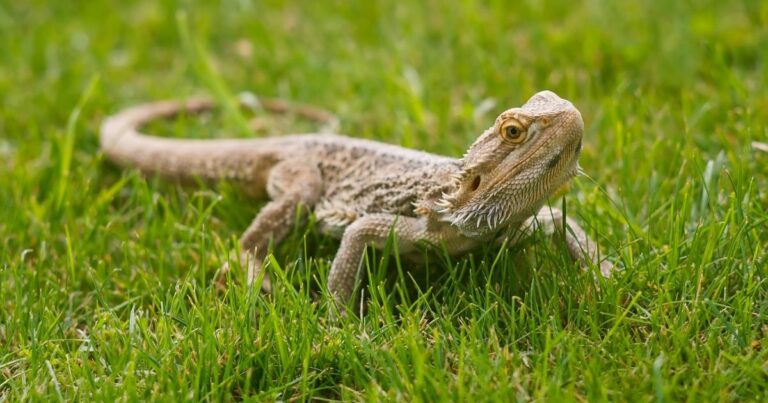Myth: Bearded dragons can be housed together
Debunking the myth of cohabiting bearded dragons. Learn why these solitary creatures prefer their own space, and how to provide the best care for your scaly friend. Busting the myth that bearded dragons can be housed together
Table of Contents
Key Summary Table: Myth: Bearded dragons can be housed together
| Origin: Misunderstanding from pet store displays |
| Belief: Space-saving and perceived companionship |
| Truth: Bearded dragons are solitary and territorial |
| Implications: Stress, malnutrition, injury |
| Conclusion: Bearded dragons should not be housed together |

Introduction
| The myth is a result of misunderstanding and misinformation |
| It’s perpetuated by well-meaning pet owners |
| The truth about cohabiting bearded dragons will be explored |
Let’s talk about a myth that’s been circulating in the bearded dragon community. It’s the idea that these scaly friends can live together in harmony. It’s a charming thought, isn’t it? A little dragon commune, all your bearded buddies cohabiting peacefully. But, as with many myths, reality doesn’t quite match up with our fantasies.
Bearded dragons are solitary creatures. They’re territorial and can become aggressive if they feel their space is being invaded.
This myth, like many, is born out of misunderstanding and misinformation. It’s perpetuated by well-meaning pet owners who want the best for their scaly friends. However, good intentions aren’t always enough. We need to arm ourselves with knowledge and understand the truth about our bearded buddies.
So, buckle up, dragon enthusiasts! We’re about to embark on a myth-busting journey. We’ll delve into the origins of this myth, explore why it’s so widely believed, and uncover the truth about cohabiting bearded dragons.
- The myth is widespread in the bearded dragon community
- The goal is to debunk the myth and provide accurate information
- The journey will involve exploring various aspects of the myth
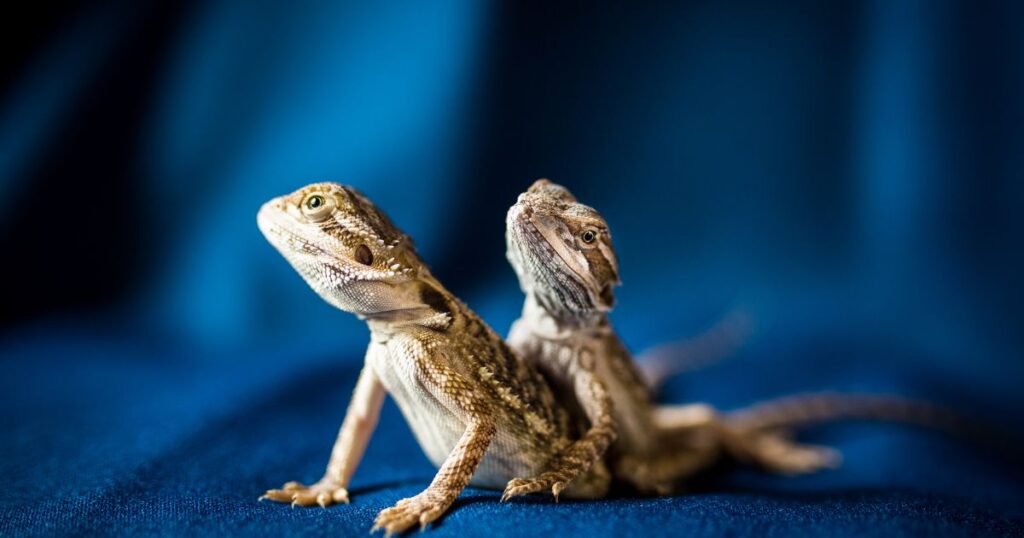
The Myth and its Origin
| Originates from pet store displays |
| Bearded dragons are solitary in the wild |
| Pet store environment is not a natural habitat |
The myth that bearded dragons can live together likely originates from what we see in pet stores. It’s not uncommon to see these creatures in groups in such settings. If they can live together in the store, why not at home, right? Unfortunately, this assumption couldn’t be further from the truth.
In the wild, bearded dragons are solitary creatures. They’re territorial by nature and don’t take kindly to intruders. The groups you see in pet stores are a result of necessity, not choice. It’s a temporary situation, and not one that should be replicated in a home setting.
The pet store environment is far from the natural habitat of these creatures. It’s a commercial setting, designed for the convenience of the store, not the comfort of the dragons. It’s essential to remember this when setting up your bearded dragon’s home.
- Pet stores often house bearded dragons together due to space constraints
- Observing this, people assume that it’s okay to do the same at home
- The natural behavior of bearded dragons is misunderstood
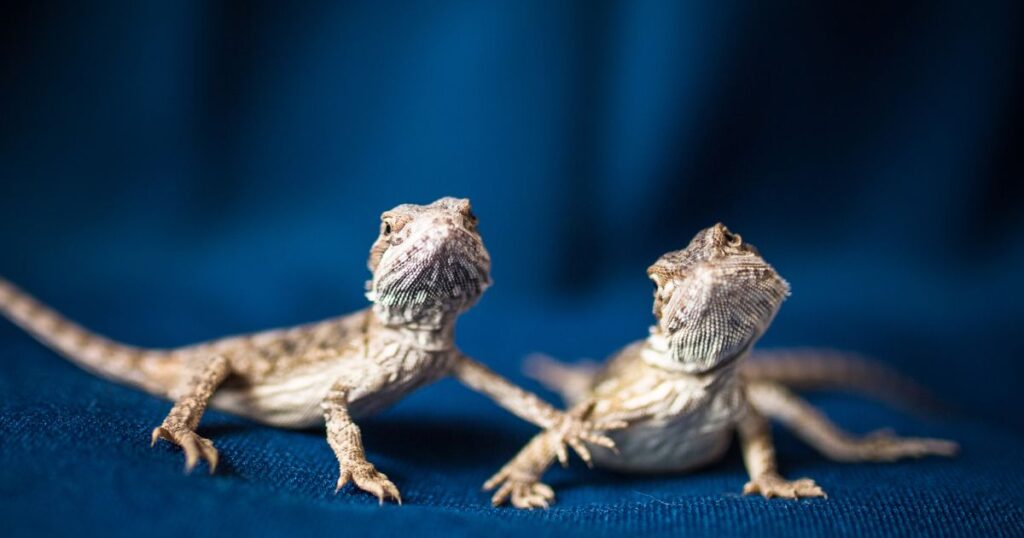
Why do People Believe the Myth
| It’s a space-saving solution |
| The idea of companionship is appealing |
| Misinformation and misunderstanding reinforce the belief |
The idea of housing bearded dragons together is appealing for several reasons. First, it’s a space saver. If you have more than one dragon, it’s much easier to keep them in one enclosure than to have multiple setups. Second, it’s just plain cute. The thought of our scaly friends having companions to interact with is a heartwarming one.
However, these reasons overlook the fact that bearded dragons are not social creatures. They don’t crave companionship like we do. In fact, being forced to live in close quarters with another dragon can cause them a great deal of stress.
Moreover, the belief in this myth is often reinforced by misinformation and misunderstanding. Without proper research and understanding of the species, it’s easy to project our human feelings and desires onto these creatures, leading to harmful practices.
- People often project their social needs onto their pets
- The myth is perpetuated by a lack of research and understanding
- The idea of a dragon “community” is appealing to many

The Truth about Cohabiting Bearded Dragons
| Housing bearded dragons together is a bad idea |
| Bearded dragons are territorial and can become aggressive |
| Cohabitation can lead to competition for resources |
The truth is, housing bearded dragons together is a bad idea. Bearded dragons are solitary animals. They’re territorial and can become aggressive if they feel their space is being invaded. This can lead to fights, injuries, and even death.
Moreover, housing bearded dragons together can lead to competition for resources. This includes food, basking spots, and hiding places. One dragon may become dominant, leaving the other without access to the things it needs to stay healthy.
In essence, while the idea of a communal living situation for your bearded dragons might seem appealing, it’s far from ideal. It goes against their natural instincts and can lead to a host of problems, from stress to physical harm.
- Bearded dragons are not social animals
- They can become stressed and aggressive when housed together
- A dominant dragon may deprive the other of necessary resources
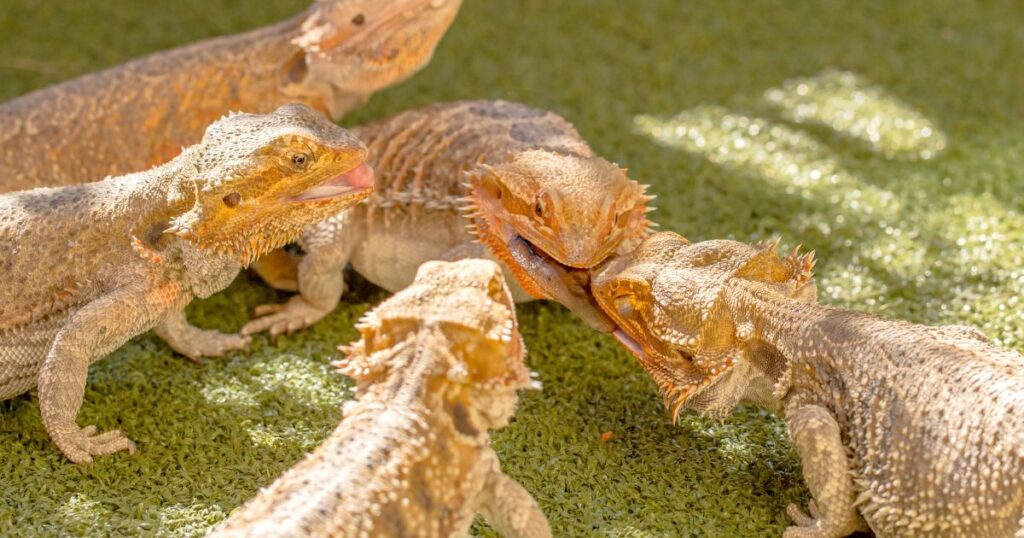
The Implications of the Myth
| Potential outcomes include stress, malnutrition, and injury |
| Believing the myth can lead to irresponsible pet ownership |
| Misunderstanding of bearded dragon behavior can lead to poor care practices |
The implications of this myth are serious. Stress, malnutrition, and injury are all potential outcomes of housing dragons together. It’s not worth the risk, no matter how convenient or cute it might seem.
Moreover, believing in this myth can lead to irresponsible pet ownership. Owning a pet, especially an exotic one like a bearded dragon, comes with the responsibility of understanding their needs and providing an environment that caters to them. For bearded dragons, this means giving them their own space.
Lastly, this myth can also lead to a misunderstanding of bearded dragon behavior. Misinterpreting their actions can lead to poor care practices and negatively impact the health and happiness of your pet.
- The myth can lead to harmful practices in bearded dragon care
- It can result in a misunderstanding of bearded dragon behavior
- The health and happiness of the bearded dragons are at risk
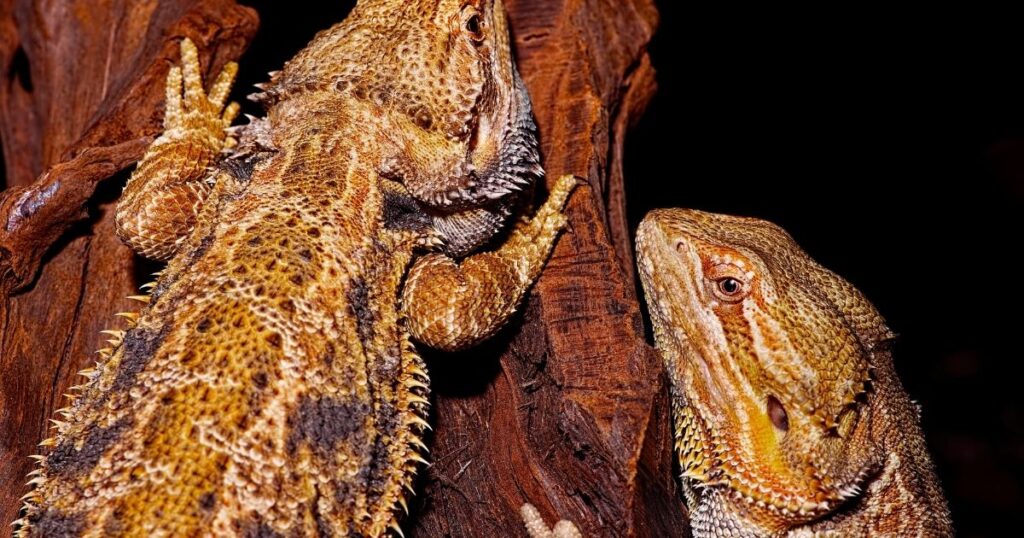
Believing in this myth can have serious consequences for your bearded dragons. Stress, malnutrition, and injury are all potential outcomes of housing dragons together.
Conclusion
| The myth is debunked: bearded dragons should not be housed together |
| Bearded dragons are solitary creatures that need their own space |
| The best care for bearded dragons involves understanding their needs |
In conclusion, the myth that bearded dragons can be housed together is just that – a myth. While it might seem like a nice idea, the reality is far from ideal. Bearded dragons are solitary creatures that need their own space to thrive.
It’s time we put this myth to bed once and for all. Bearded dragons should not be housed together. It’s not in their nature, and it’s not conducive to their health or happiness.
So, let’s take this knowledge and use it to provide the best possible care for our bearded buddies. They deserve nothing less.

Call to Action
Now that you’re armed with the truth, it’s time to take action. If you currently have bearded dragons living together, consider giving them separate enclosures. Your dragons will thank you for it!
Knowledge is power, and the more we know about our scaly friends, the better we can care for them. So, keep reading, keep learning, and keep busting those myths!
This post is part of my Bearded Dragon Facts category and the Bearded Dragon Common Myths and Misconceptions.
Other posts of interest: Myth: Bearded dragons do not require regular cleaning of their enclosure and Myth: The Danger of Feeding Mealworms and Superworms to Bearded Dragons
Disclaimer: This blog post is based on current knowledge and understanding of bearded dragon behavior and care. Always consult with a vet or a professional reptile expert for advice tailored to your specific circumstances.
Frequently Asked Questions
So, I can’t throw a bearded dragon house party?
As fun as that sounds, your bearded dragon would probably RSVP with a ‘no, thank you’. They’re more into ‘me time’ than ‘we time’. So, it’s best to let them enjoy their solitude.
But my dragons seem to get along. They’re not fighting, so they’re friends, right?
Not quite. Just because your dragons aren’t duking it out doesn’t mean they’re best buddies. They might just be tolerating each other. Remember, these guys are solitary by nature. They’re not looking for a BFF.
My bearded dragons are siblings. Doesn’t that make a difference?
Even siblings need their space. Just think about how you feel when your sibling borrows your stuff without asking. Annoying, right? It’s the same for your dragons. They need their own territory.
I’ve seen bearded dragons living together in pet stores. Why can they do it, but I can’t?
Pet stores are like dragon dorm rooms. It’s a temporary setup, not a long-term living arrangement. It’s not the ideal situation for these solitary creatures.
So, what happens if I ignore this advice and house my dragons together anyway?
Well, you might end up with some grumpy dragons. They could become stressed, malnourished, or even injured. It’s not worth the risk. Give your dragons the space they need to thrive.
Okay, I get it. No roommates for my dragon. But won’t they get lonely?
Nope! Bearded dragons aren’t like us. They don’t get lonely. They’re perfectly happy living the solo life. So, no need to worry about your dragon feeling lonely. They’re just enjoying their ‘me time’.
